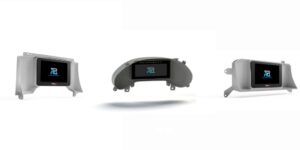
While it may not come as a surprise that compressed air systems produce a large quantity of condensates as a result of compression, just how much they produce, and what those condensates contain, may be somewhat surprising.
The first item, being the fact that compressed air contains a lot of moisture that must be removed, is the reason for the necessity of a compressed air dryer system. The second, wherein there is a large quantity of condensate material containing oils, is the reason for the necessity of an oil-water separator.
Condensate Management in Compressed Air Systems
Calculating the amount of liquid that can manifest as condensate in a compressed air system is a function of several factors, being chiefly the flow rate (the total amount of air in question) and the temperature and relative humidity of the air.
For example, a 500 SCFM system operating with air at 60℉ and at 65% relative humidity can produce almost 2 gallons of condensate per hour. Increase the temperature and relative humidity, and the condensates generated will be substantially higher.
This condensation will manifest at a variety of points throughout the system and must be removed nonetheless. This can sometimes be accomplished via the use of drain valves.
However, it is not nearly always the case that only water is present as a condensate; in fact, this is rarely the case. Often oil and grease leach into compressed air as contaminants originating from lubricant oils in the system.
In any system in which the plan for disposal of condensates is into public wastewater or to a sewer system, there are legal requirements for the maximum levels of oil that can be discharged with wastewater. An oil-water separator is required to remove this excess grease or oil from oily water before it can be safely and legally discharged.
How an Air System Products Oil Water Separator Works
Air System Products line of Oil Water Separators can be used to remove oil from condensates in order to meet legal requirements for discharge. They utilize multi-stage separations to remove free oil and grease from the system, require no power, and are easy to install and maintain.
To remove oil, the system allows both compressed air and liquid condensates to enter the unit. The first stage chamber collects sediment helping prevent rust, dirt and scale from entering into the main reservoir of the oil/water separator. The second stage is the main reservoir which provides sufficient residence time to allow oil to coagulate and float to the surface. Next the pre-adsorption chamber removes the segment of oils that are still in solution or have migrated through to this chamber. In the final stage, the carbon bed ensures that the condensate will meet or exceed the discharge limits.
To learn more about the specific operation of Aircel DS Oil Water Separators, or about why oil is present in compressed air condensates, visit Air & Vacuum Process, Inc., at AirVacuumProcess.com, or contact their customer service team directly at 866-660-0208.


